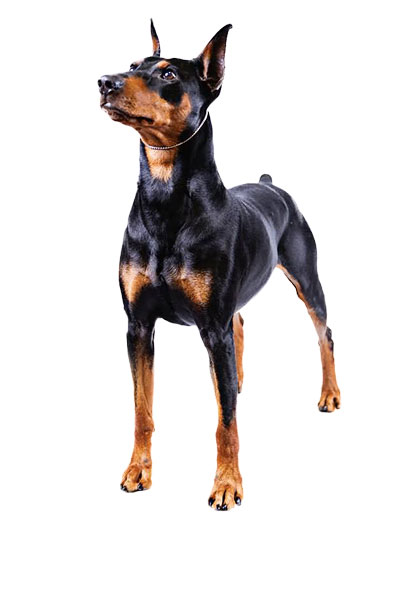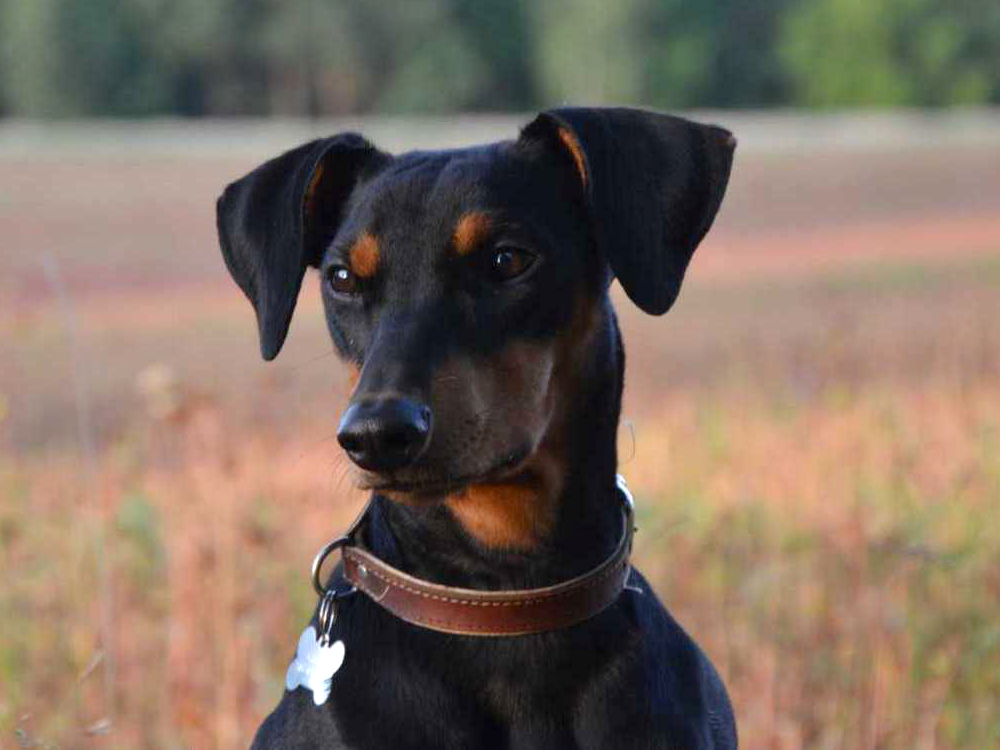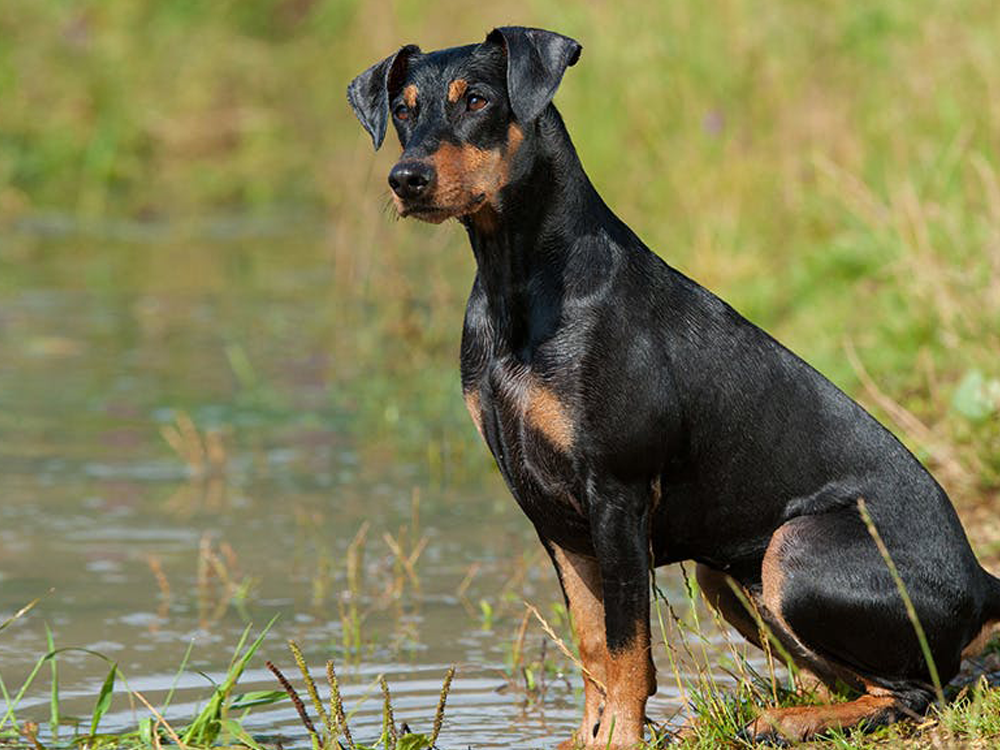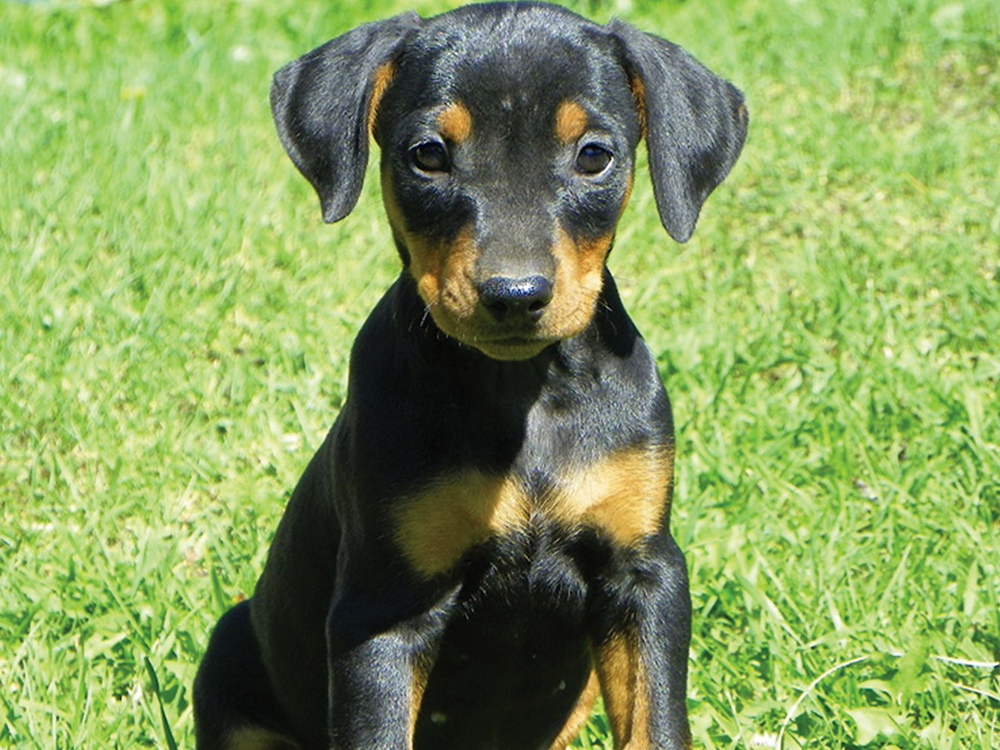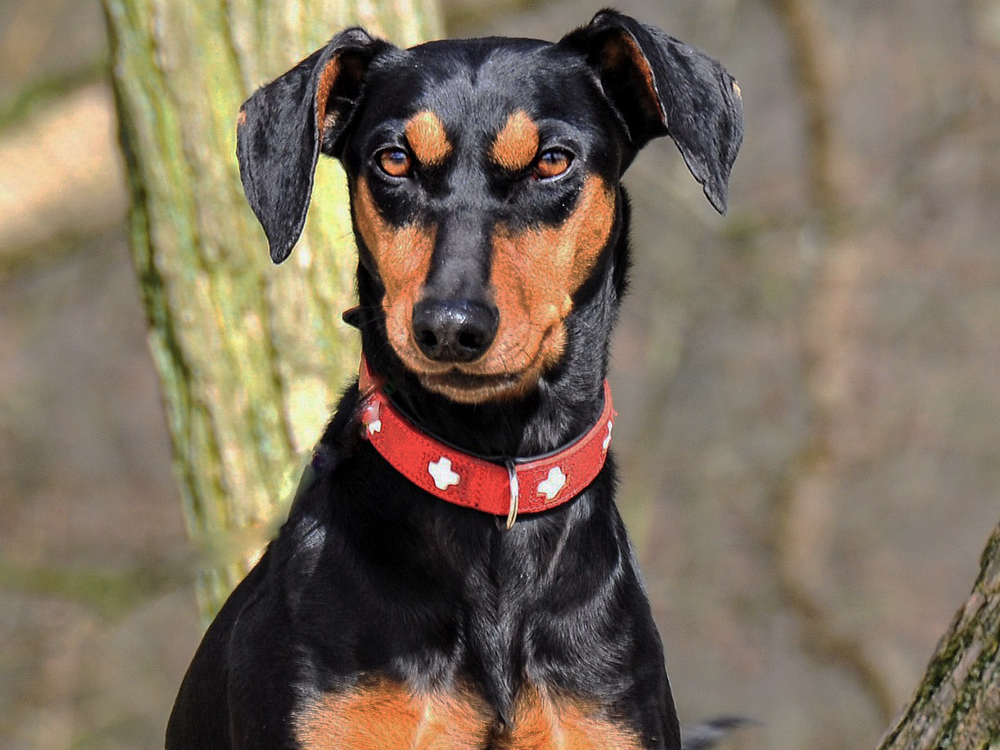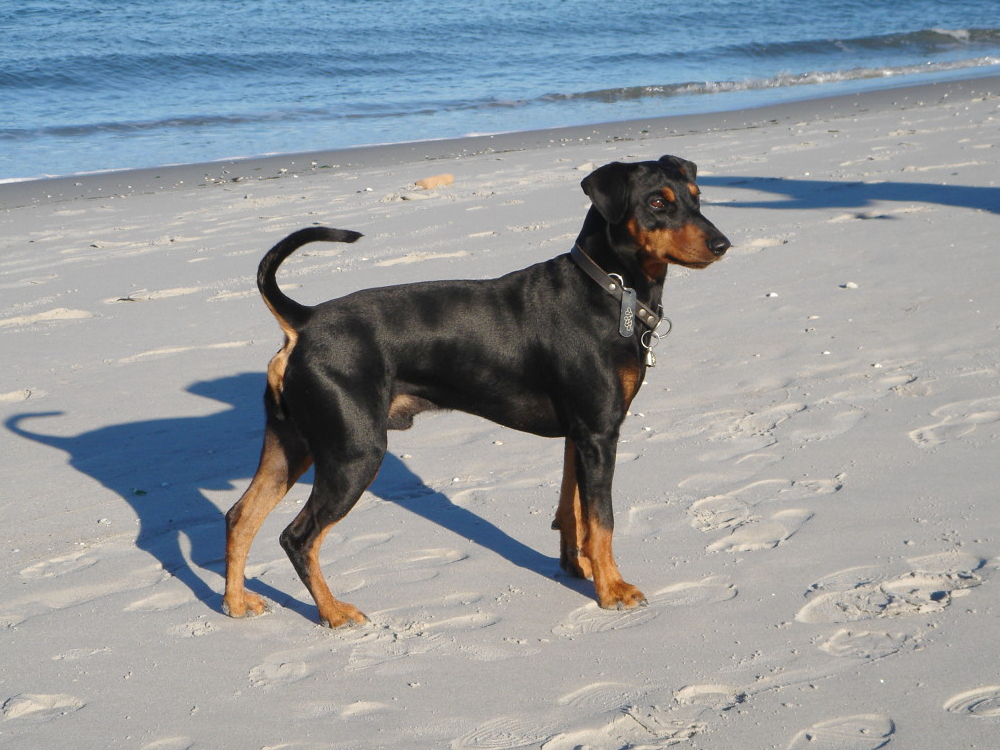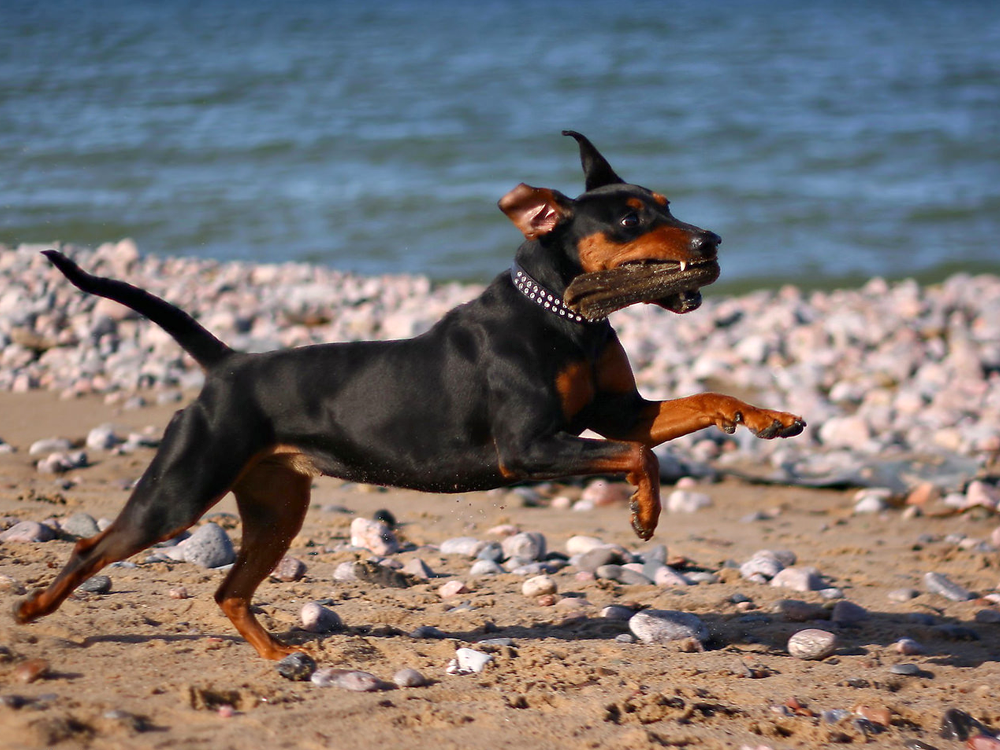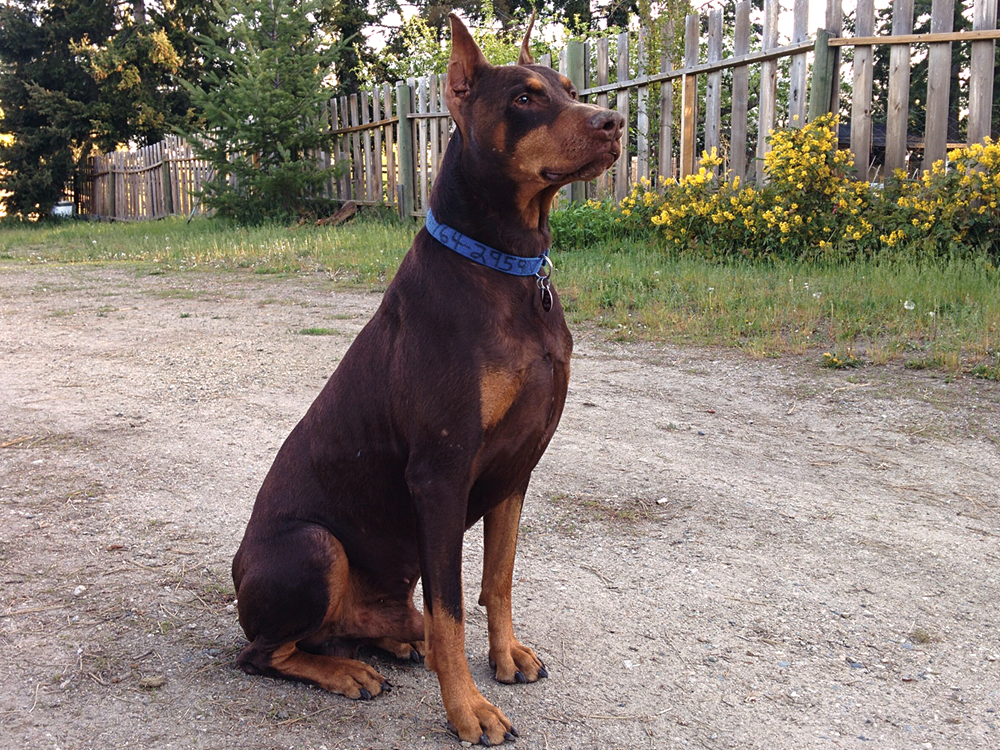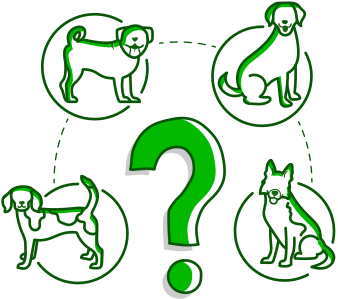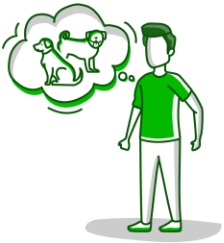
Pinscher Breed Pictures
Vital Breed Stats
| Height: | 48 - 53 cm M | 46 - 51 cm F |
| Weight: | 23 - 27 kg M | 18 - 25 kg F |
| Breed Group: | Utility Dog Group |
| Life Expectancy: | 11 - 14 years |
| KC Registered: | No |
Breed Characteristics
| Size: |  |
| Grooming: |  |
| Exercise Level: |  |
| Trainability: |  |
| Barking Level: |  |
| Good with Children: |  |
| Good with other pets: |  |
| Affectionate: |  |
| Protective: |  |
| Cost to Keep: |  |
Give a thumbs up if you love the Pinscher

0
More About the Breed
History
The Pinscher or German Pinscher originated in 15th century Germany, bred to be a ratter to control vermin. The breed was originally called Smooth and Wirehaired Pinscher. It is a cousin to the Doberman Pinscher, the Miniature Pinscher, Affenpinscher and the Schnauzers (Giant Schnauzer, Standard Schnauzer and Miniature Schnauzer).
In the mid-19th century, Pinschers became widely popular and worked to guard coaches on top of vermin control. However, the breed nearly went extinct during World Wars I and II but thanks to German fancier Werner Jung, the Pinscher breed was saved. In his efforts to revive the breed, he travelled all over Germany in 1958 looking for Pinschers on farms that produced the dogs we see today.
Today, German Pinschers remain popular but are more sought out as a companion dog and family pet because of their charming and loyal natures. The breed was first recognised and registered by the German Kennel Club in 1900. The Pinscher, albeit a rare breed, is recognised by The Kennel Club under the Working group. Since only a few puppies are registered in the UK per year, anyone who wants to own a Pinscher will need to register its interest and agree to be put on a waitlist.
Appearance
The German Pinscher is a solid and medium-sized working dog with a square build. It is lean and muscular with a classic Pinscher look of a wedge-shaped head, oval-shaped eyes that always look alert, V-shaped ears, a black nose, and a perfectly strong scissor bite. Also, its tail is held slightly above and is often docked. The German Pinscher has a standard size of 25 to 45 pounds and 43 to 51 centimetres.
The Pinscher sports a short, glossy and smooth coat. The coat comes in various colours including black and blue with red markings, red, stag red (red with black hairs), and Isabella (bay or fawn colour). The markings should appear on the above the eyes, cheeks, lips, lower jaw, throat, chest and between the hock joint and feet. White markings are not acceptable on the show ring.
Grooming
Temperament
The German Pinscher is a fearless, imposing and dedicated companion dog. It is completely devoted, affectionate and protective of its family and is an excellent guard dog, capable of taking down intruders. Despite its tough disposition, the Pinscher is dependent on its humans and will love nothing more than to be part of family activities. Since this working dog is highly energetic, it is well suited for experienced dog owners who have active lifestyles.
This breed makes an excellent family pet and is suitable for families with older children. Regardless of the children's age, supervision is required to make sure playtime stays calm. When it comes to other household animals or pets, the Pinscher gets on well with other dogs, and even with cats, it grows up with. However, care must be taken around smaller animals. Pinschers were once bred to be ratters, and they will not hesitate to give chase when their prey drive kicks in and takes over.
Intelligence
Nutrition
- Senior and less active: up to 890 calories daily
- Typical adults: up to 1000 calories daily
- Physically active/working dogs: up to 1115 calories daily
Feeding
Health
Exercise
Cost of Ownership
When you plan to buy a German Pinscher, you will have to be a little patient. Pinschers are in short supply in the UK since only a few litters are registered each year. As early as possible, have your interest registered with a reputable breeder so you can be put on a waiting list.
While waiting, use the time to set aside the budget to buy the puppy and prepare for its other needs. Here is a breakdown of possible expenses to own and raise a German Pinscher:
- Prepare to pay somewhere around £1,100 for a well-bred Pinscher.
- Pet insurance is another cost, which will set you back £40 to £120 a month.
- Food costs, especially high-quality, protein-rich dog food, will cost around £20 to £30 a month.
- Veterinary care is a major cost you should set aside a budget for, especially for regular vet visits. The estimated budget for a year is around £1,200.
- Dog supplies and equipment will cost around £200. However, this is only a one-time purchase.
Is a Pinscher Right for You?
- The Pinscher, also known as the German Pinscher, is a medium-sized working dog.
- It is intelligent and eager to please, which makes it easy to train.
- It is devoted, affectionate and protective of its family and are excellent guard dogs.
- Pinschers are suitable for experienced dog owners with active lifestyles.
- They are also excellent therapy and service dogs.
